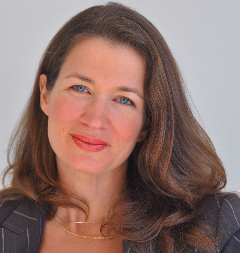I was recently reminded of my maternal grandmother who died a couple of years ago. She was almost 90 and had had a pretty good, healthy life in many respects. She had also left some pretty clear instructions for all of us when she died. For one, she did not want to be buried and she did not want a funeral where people would be crying over her grave site. She even kept the 1932 poem “Do Not Stand at My Grave and Weep” engraved on a small, wooden plaque. She hung that plaque on her wall in her Muskoka home. Instead, my grandmother, who was never religious that I knew of but seemed to take comfort in a God of some sort in her final days, wanted to be cremated and have her ashes sprinkled in water.
Indeed her decision created a rift in the family between her two daughters — a rift that has yet to heal. My mother insisted she needed some closure and wanted at least a celebration of life ceremony, which would acknowledge what my grandmother had meant to friends, family and her community for her nearly 90 years. My aunt, her sister, insisted that, as requested, nothing should be done aside from scattering the ashes. I decided, as the one who would care for the ashes and the disagreement, to try to take care of everyone’s feelings on this. I would have a small celebration of life ceremony with her plaque and picture, wine and cheese (she loved throwing wine and cheese parties). Then I would take her ashes and scatter them in part, in the beautiful nearby lakes and rivers. I would carry the remaining ashes to the Caribbean and sprinkle them in the ocean, where my grandmother loved to holiday in her younger years.
It is safe to say that even the most well-meaning decisions around life cycle events can be messy — particularly in families with existing frictions and unresolved conflicts. This can also be the case in diverse communities where different beliefs and traditions must be taken into account, where economics must be considered and where increasingly blended families and philosophies are changing the ways in which people think about how death should be handled — both for themselves and their loved ones.
I was heartened to see that those who regularly deal with death and dying are now talking about these changes and how they, and families are adapting. For instance, in the recent article “How we handle our Dead is Changing Due to Diversity“, it states that in the past, religious and cultural accommodations would have been unheard and as such, many found the inability to perform sacred death rituals openly and legitimately, to be “very stressful and painful”. Now, the article states that hospitals currently “allow Buddhists to stay by the bedside of deceased loved ones, chanting prayers to help the spirit leave the body. Interfaith couples can [now] be buried together. And cemetery operators have turned to Feng Shui masters for advice on positioning graves.” Further, there are communities of people who believe that families should take care of their dead and therefore funerals and arrangements are made by the family at home.
While religious diversity accounts for some of these changes, evolving philosophies and public attitudes account for other changes in the funeral industry. In the article titled “Traditional Funeral on its Deathbed” interviewees talk about the cost and environmental impact of traditional end-of-life ceremonies. One woman reports that she wants her funeral to look like a “gathering of friends and family…with her body…disposed of in the most inexpensive and environmentally friendly way possible”. She says that the memories are what are most important and that once she is gone, she is gone. Indeed a growing environmental movement has a growing number of people requesting a green burial. For instance, one alternative funeral website states that instead of elaborate caskets or even simpler wooden caskets, some people ask to be buried in “cardboard or other easily biodegradable materials. Further, they may choose their final resting place to be in a park or woodland and may have a tree planted over their grave as a contribution to the environment and a remembrance”. Another man interviewed in the second newspaper article chose to be cremated and have his ashes sprinkled “in the Pacific Ocean to ensure he would literally be all over the world”.
While I resist thinking about this issue in the context of just more so-called consumer choice, it is important to note that Humanist ceremonies provide alternative ways to think about such life cycle events. A Humanist ceremony, with its strong adherence to democratic principles, human dignity, respect for diversity and the environment, can help facilitate those complicated and perhaps conflicting needs and “choices” that come with our increasingly diverse, blended, hybridized environments.

